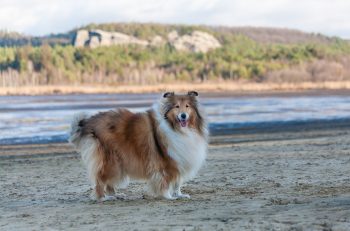Dog Ate a Bee (and Stung!): What to Do
The post Dog Ate a Bee (and Stung!): What to Do by Cindy Howle appeared first on Dogster. Copying over entire articles infringes on copyright laws. You may not be aware of it, but all of these articles were assigned, contracted and paid for, so they aren’t considered public domain. However, we appreciate that you like the article and would love it if you continued sharing just the first paragraph of an article, then linking out to the rest of the piece on Dogster.com.
Many dogs will snap at flying bees and eat them, resulting in painful mouth stings. The first signs that your dog has been stung by a bee are swelling around the nose, mouth and muzzle, says to Dr. Natalie Isaza, owner of Access Veterinary Services in Florida. If your dog eats the bee, first determine if there’s an allergic reaction.
Dog stung by bee in mouth: What to do
Check for normal breathing and behavior. Don’t panic: Your dog may paw at the face. Bee stings hurt! Watch for deep, rapid breaths, indicating tissues in the airways are swelling. The tongue and gums may also turn light blue.
Watch for vomiting or loss of consciousness, signaling an emergency.
“Just like people, dogs can have a severe hypersensitive reaction to a bee sting, which would require emergency treatment by a veterinarian,” says Dr. Isaza.
“If your dog has none of these signs and is experiencing swelling around the muzzle and discomfort only, you can administer diphenhydramine (Benadryl) to alleviate some of the allergic response,” she says. Always contact your vet. He/she knows your dog’s health and will provide the correct dosage.
Dog ate a bee: What to do
If your dog gets stung and also swallows the bee, follow these steps:
If there are no severe allergic reactions, and you’ve given Benadryl under your vet’s direction, calm inflammation with ice or cool water.
Once in the stomach, Mr. Bee encounters digestive juices and should not be a problem.
What to do if dog gets stung by a bee: Honeybees, hornets and wasps
Female honeybees (also known as worker bees) and many other bee species lose their stinger and die after a sting. Although the sting hurts, it’s not poisonous to your dog.
Hornets, wasps and yellow jackets can sting multiple times, delivering more venom — potentially more dangerous and definitely more painful, according to Dr. Isaza.
Regardless the type of stinger, watch for the severe reactions mentioned above: These are the best clues for helping after sweet dog meets honeybee.
For more information on caring for bug bites, read our article How to Handle Bites & Stings in Dogs.
The post Dog Ate a Bee (and Stung!): What to Do by Cindy Howle appeared first on Dogster. Copying over entire articles infringes on copyright laws. You may not be aware of it, but all of these articles were assigned, contracted and paid for, so they aren’t considered public domain. However, we appreciate that you like the article and would love it if you continued sharing just the first paragraph of an article, then linking out to the rest of the piece on Dogster.com.



